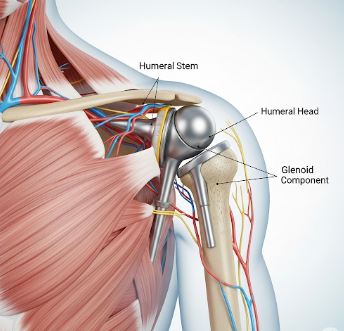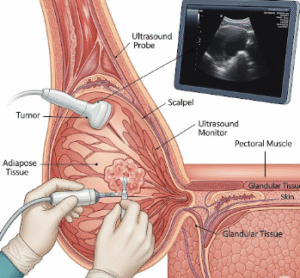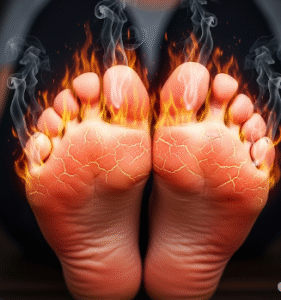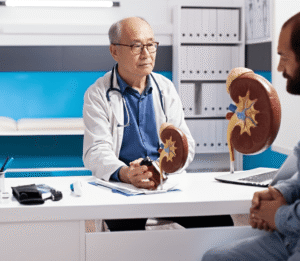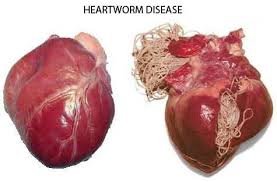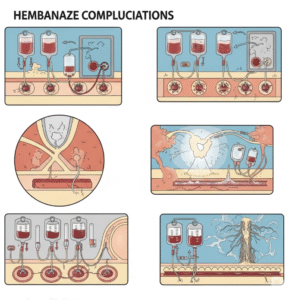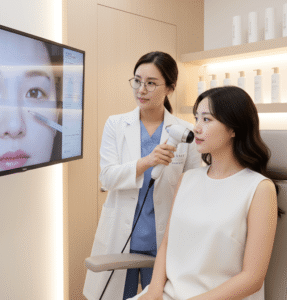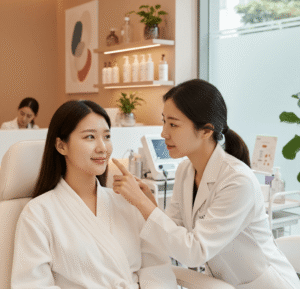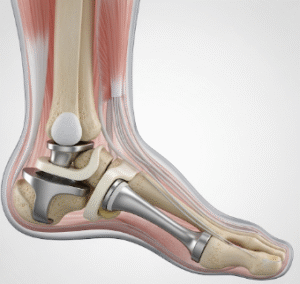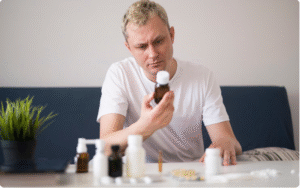Overview
Total shoulder replacement (TSR), or shoulder arthroplasty, is a surgical procedure in which the damaged parts of the shoulder joint are replaced with artificial components. It is often recommended for patients suffering from severe arthritis, degenerative joint disease, complex fractures, or chronic shoulder instability.
In Korea, the procedure is performed using state-of-the-art implants, 3D preoperative planning, and minimally invasive surgical techniques. This ensures not only pain relief but also a restoration of shoulder function, mobility, and quality of life.
What is Total Shoulder Replacement?
The shoulder is a ball-and-socket joint, consisting of the humeral head (ball) and the glenoid cavity (socket). In a total replacement, both are resurfaced with prosthetic components:
- ✦ The humeral head is replaced with a metal ball attached to a stem.
- ➤ The glenoid cavity is resurfaced with a smooth polyethylene (plastic) socket.
This creates a new joint that mimics natural shoulder movement.
Indications for TSR:
- ✦ Severe osteoarthritis or rheumatoid arthritis.
- ➤ Complex fractures of the upper humerus that cannot be reconstructed.
- ✦ Rotator cuff tear arthropathy (when tears lead to arthritis).
- ➤ Shoulder deformities or failed previous surgeries.
- ✦ Persistent, severe pain and loss of motion despite conservative treatment.
What are the Benefits?
Benefits of total shoulder replacement include:
✅ Pain relief in severe arthritis or post-traumatic cases.
➤ Improved joint function for activities such as lifting, grooming, and dressing.
✦ Restoration of range of motion, allowing overhead and rotational movements.
➤ Stability of the joint, reducing the risk of repeated dislocations.
✅ Better sleep since shoulder pain often interferes with rest.
✦ In Korea, precision implant alignment improves outcomes and implant longevity.
Procedure Details
1) How should I prepare for Total Shoulder Replacement?
Preparation involves:
- ✦ Medical evaluation: blood tests, X-rays, CT/MRI for joint assessment.
- ➤ Medication adjustments: stopping blood thinners if required.
- ✦ Preoperative physiotherapy: strengthening surrounding muscles.
- ➤ Infection prevention: skin and dental checks.
- ✦ Lifestyle changes: smoking cessation, weight management.
- ➤ Fasting: before anesthesia.
- ✦ Patient counseling: understanding implant options and rehabilitation plan.
2) What happens during the procedure Total Shoulder Replacement?
The surgery usually lasts 2–3 hours and is performed under general anesthesia or a nerve block.
Steps include:
➤ Step 1: An incision is made on the front or side of the shoulder.
✦ Step 2: The damaged humeral head is removed.
➤ Step 3: A metal stem with a rounded head is inserted into the humerus.
✦ Step 4: The glenoid cavity is reshaped and fitted with a plastic socket.
➤ Step 5: The ball and socket are aligned to restore smooth motion.
✦ Step 6: The incision is closed, and the arm is placed in a sling.
Korean hospitals often use 3D-printed guides and computer navigation for precise implant placement.
3) What happens after Total Shoulder Replacement?
Post-surgery recovery typically includes:
- ✦ Hospital stay: 3–5 days.
- ➤ Pain control: medications and cold therapy.
- ✦ Immobilization: sling for 2–4 weeks.
- ➤ Rehabilitation: gentle range-of-motion exercises start within days.
- ✦ Activity restrictions: no heavy lifting for several months.
- ➤ Full recovery: usually 3–6 months, with continued improvements for a year.
Risks / Benefits
Potential Risks:
- ✦ Infection around the implant.
- ➤ Nerve or blood vessel injury.
- ✦ Stiffness or reduced mobility.
- ➤ Loosening, wear, or dislocation of the implant.
- ✦ Blood clots or anesthesia-related complications.
- ➤ Rarely, need for revision surgery.
Benefits:
- ✅ Major reduction in pain.
- ✅ Restores shoulder function and independence.
- ✅ Allows return to normal daily activities.
- ✅ Improves sleep and overall well-being.
- ✅ Advanced Korean surgical expertise ensures high success rates.
Recovery and Outlook
Recovery depends on commitment to physiotherapy and proper joint care:
- ➤ First 2 weeks: wound healing, pain control, limited motion.
- ✦ Weeks 3–6: gradual mobility exercises, light activities.
- ➤ Months 2–3: strengthening therapy, reduced sling use.
- ✦ Months 4–6: near full range of motion, improved strength.
- ➤ Long-term: implant lifespan 15–20 years with proper use.
Korean hospitals provide specialized rehabilitation programs, often integrating hydrotherapy, robotics, and tailored physiotherapy for international patients.
When To Call the Doctor
Seek medical attention if you notice:
⚠ Fever or chills after surgery.
⚠ Severe swelling, redness, or discharge from the incision.
⚠ Persistent numbness or tingling in the arm.
⚠ Uncontrolled pain.
⚠ Sudden loss of movement or shoulder dislocation.
Best Korea Option / Process
Korea is recognized worldwide for orthopedic and joint replacement surgery. Advantages include:
- ✦ Expert orthopedic surgeons trained internationally.
- ➤ Next-generation implants with high durability.
- ✦ Minimally invasive techniques with smaller scars.
- ➤ Customized prosthetics using 3D planning.
- ✦ Affordable pricing compared to Western countries.
- ➤ Multilingual patient support for foreigners.
Highlights of Total Shoulder Replacement in Korea
- ✅ Restores shoulder strength and mobility.
- ➤ Excellent solution for arthritis, fractures, or joint damage.
- ✦ Relieves pain and improves daily quality of life.
- ➤ High success rates with modern implants.
- ✅ Korea offers world-class surgery and rehabilitation for international patients.

